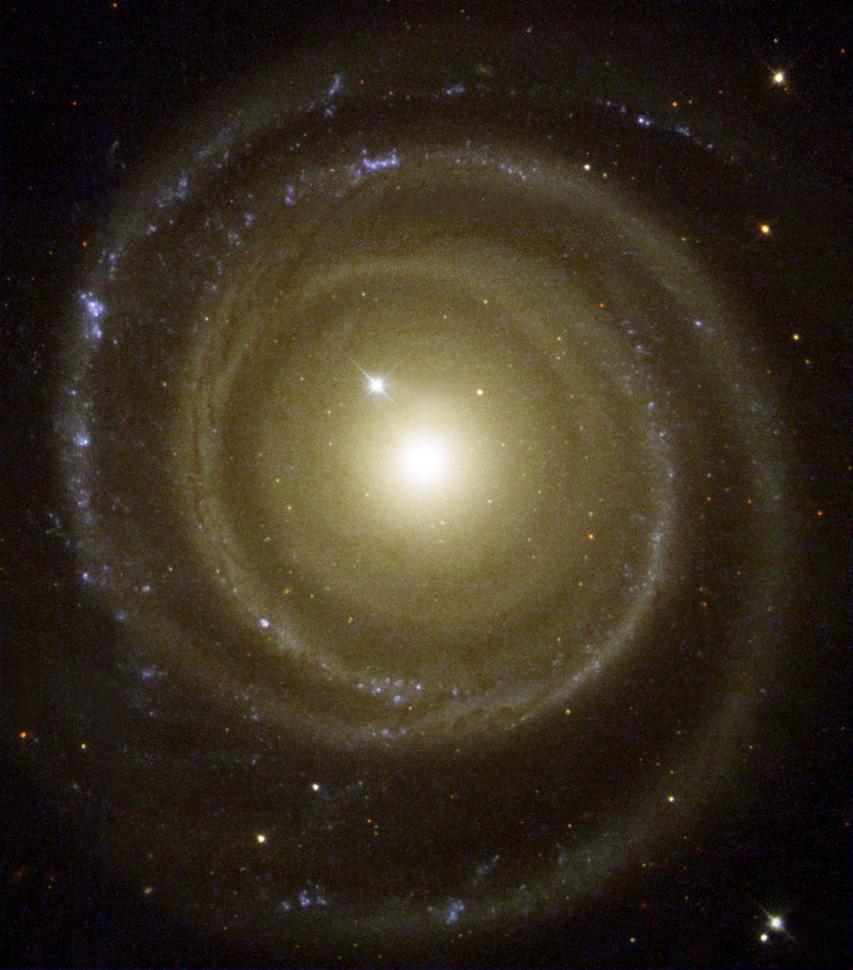
Hubble Views NGC 4622
To the surprise of astronomers, galaxy NGC 4622 appears to be rotating in the opposite direction from what they expected. Using a dust silhouette method, which indicates what side of the galaxy is closer to Earth, data from Hubble helped astronomers determine that the galaxy is rotating in a clockwise direction. This result was later confirmed through an independent means of investigation. Based on galaxy simulations, astronomers had expected that the galaxy was turning counterclockwise. Most spiral galaxies have arms of gas and stars that trail behind as they turn. But this galaxy has two "leading" outer arms, meaning that they are "winding outward." To add to the conundrum, NGC 4622 also has a "trailing" inner arm that is wrapped around the galaxy in the opposite direction it is rotating. Astronomers suspect that NGC 4622's behavior results from interactions with another galaxy. Its two outer arms are lopsided, meaning that something disturbed them. The galaxy's core also provides evidence for a merger between NGC 4622 and a smaller galaxy. NGC 4622 lies approximately 111 million light-years from Earth in the constellation Centaurus. For more information, visit: hubblesite.org/image/1137/news_release/2002-03
